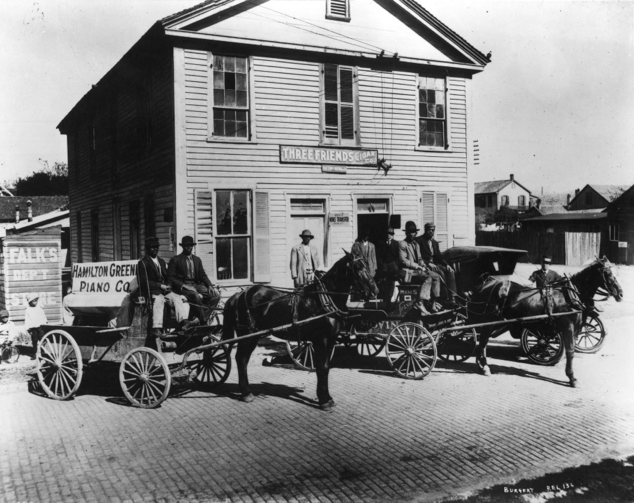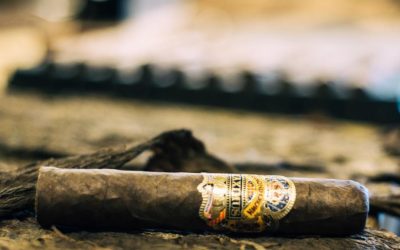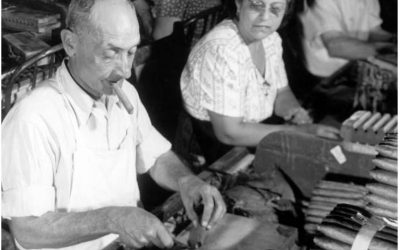Native Tampans know a thing or two about criminal elements in Ybor City in the early 20th Century. (Prohibition era smuggling tunnels beneath the city, radical communist cigarmakers, the Anglo-American crime kingpin Charlie Wall, the Trafficante Crime Family, and the gambling racket of La Bolita, to name a few.) Ybor City’s criminal underbelly was reflective of the economic and cultural divides of the city. Ybor City’s different communities and sub-cultures provided the perfect pool of foot soldiers (and victims) for criminal organizations. The average Sicilian or Cuban immigrant to Ybor City was just as likely to lose money in a rigged game of Bolita as he was to join a gang of bandits and participate in a bank robbery.
Because cigar factories were the economic and cultural backbone of Ybor City, they were a popular target for organized crime. As labor disputes and the Great Depression weakened the Tampa Cigar Industry, organized crime and labor radicalism skyrocketed. In several instances, the historic “El Reloj” cigar factory, home of the modern J.C. Newman Cigar Co., and its staff fell victim.

Kissing the Ring
The cigar industry always had a unique relationship with the criminal underworld. Vicente Martinez Ybor utilized prison labor in his Cuban cigar factories in the 1860’s to maintain production rates. Ybor City was founded in 1886 as a company town for the cigar industry by Vicente Martinez Ybor and almost immediately Ybor struggled to control blackmarketeers and radical labor elements. Cigarmakers always sought better pay and special privileges for their artisan skills. When Ybor or other factory owners would not listen to their demands, they turned to labor organizations.
Nuestra Cosa
Ybor City was home to many immigrant communities (Afro-Cubans, Asturians, Chinese Cubans, Cubans, Italians, Germans, Jews, and Spaniards) who came to work in the cigar industry. In hopes of finding commonality or preserving cultural ties to the motherland, many Ybor City immigrants formed mutual aid societies (e.g. L’Unione Italian which was founded in 1894 or El Circulo Cubano de Tampa which was founded in 1902); criminal organizations formed in a similar manner.
The Sicilian Mafia or Cosa Nostra started out as a mutual aid society for Sicilian immigrants. As labor opportunities decreased and Anglo-American disdain increased, the Sicilian Mafia turned to morally ambiguous pursuits. As the racketeering and smuggling operations of Italian and Cuban criminals expanded in Ybor City throughout the 1920’s and 1930’s, it makes sense that they would find ready recruits from their respective immigrant communities.


The Law Won
In 1921, there was an attempted robbery of the E. Regensburg & Sons payroll as it traveled by car from the “El Reloj” factory. While a getaway car blocked the road, half a dozen bandits emerged from the brush and began firing into the vehicle containing the Regensburg payroll. Only after the armed guards brandished their .38 revolvers in self-defense did the bandits flee. When two of the suspects in the case were declared not guilty, various notable Tampans declared there was foul play. There is no doubt, then, that the secret staircase which runs beneath the “El Reloj” factory’s conference room was an escape route in the event of another robbery. The staircase leads from the historic general manager’s office to a safe room in the basement of the factory.
Up in Smoke
The attempted payroll robbery was not the last time the Regensburg “El Reloj” factory was threatened. The Great Depression weakened the cigar industry in Tampa. As cigarmakers lost their jobs or found their wages inadequate for the cost of living, they increasingly turned to radical labor organizations to protect their rights. One especially radical labor organization, the Tampa Tobacco Workers Industrial Union, had alleged ties to the American Communist Party and came under intense scrutiny from the Tampa police department. In 1932, it was discovered that someone had been stealing sticks of dynamite from the construction site of the Courtney Campbell Causeway. Based off intelligence from informants at the Tampa Tobacco Workers Industrial Union, detectives pieced together a radical labor plot to sabotage the cigar industry and warned the Cigar Manufacturers Association. Radical labor elements also intended to mix skunkvine, a foul-smelling weed, into the fermenting broadleaf wrapper tobacco at the “El Reloj” factory, thereby ruining the entire quarterly cigar production. Although no harm befell the “El Reloj” factory, the real or imagined conspiracy that was reflective of a very real threat to the cigar industry.
It would be quite difficult indeed for J.C. Newman Cigar Co. to be the oldest operating cigar factory in Tampa without a cigar factory to operate. When a Bolita promoter offered to establish the gambling practice at the “El Reloj” factory in the late 1950’s, Stanford Newman firmly refused.
Although the Newman family still operates the historic “El Reloj” factory, with all its mysteries and intrigue, they keep the factory running without any of the historic cop capers.

About Holden Rasmussen
Holden Rasmussen is a Museum Associate at the “El Reloj” Factory Museum. His duties include conservation, collection management, gift shop sales, and docent work. He is a new college graduate who has worked and volunteered at museums and archival facilities in different parts of the country. Holden enjoys the American outdoors, French electronic music, Yugoslav militaria, Japanese comics, and Cameroon tobacco.
The MAXIMUS Cigar Story
They say a premium cigar takes three years and two-hundred hands to prepare. The development of a cigar brand requires tenfold more effort.
J.C. Newman’s Marion, Ohio Cigar Factory
The Marion factory produced several million cigars a year, its humidors having room for six-hundred thousand cigars at any given time.
The Cartabon: Cigar Unions and Factories in Tampa
To a large extent, Tampa cigarmaker unions and factories were integral to setting the standards for modern cigar production.



